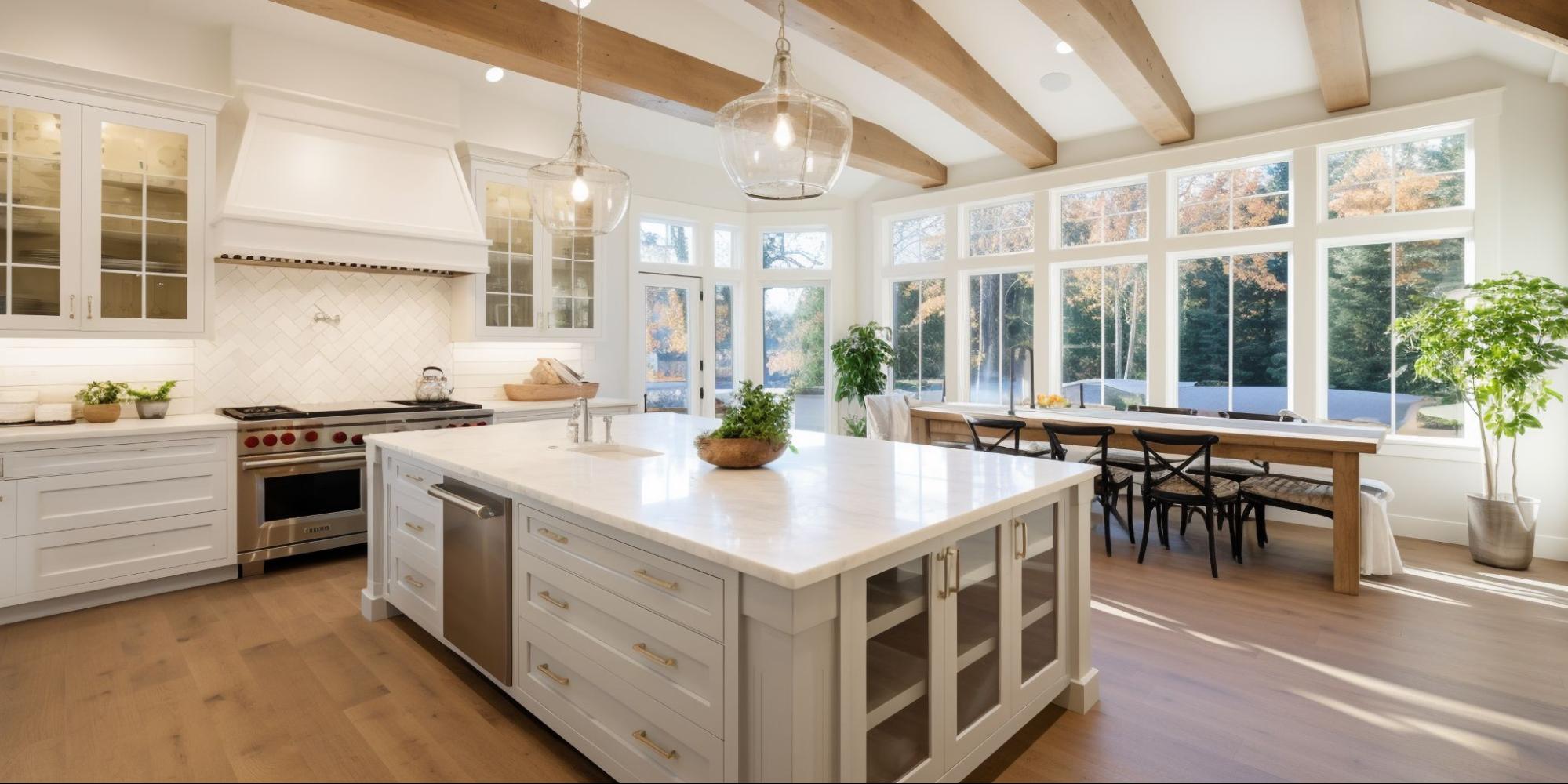Renovate or Sell As-Is? What Adds Real Value
Renovating before selling only pays off when upgrades match your market and add clear value. Cosmetic improvements often yield better returns than major remodels, and in many cases, selling as-is can be the smarter financial move.
Should You Renovate Before Selling? Here’s What Actually Pays Off
Renovating can seem like a smart way to boost value, but most major projects don’t pay off. Buyers focus more on layout, condition, and feel, costly upgrades often fall flat if they don’t fit the market.
Here’s what typically adds the most value:
- Addressing obvious repairs (roof leaks, broken HVAC, mold)
- Budget-friendly updates like paint, landscaping, or lighting
- Avoiding high-end finishes in entry-level or mid-range homes
- Skipping unnecessary renovations in investor-heavy markets
- Sticking to the 30% rule when budgeting any renovation
If you’re selling soon, the smartest approach is often strategic, not expensive. Whether you upgrade, refresh, or sell as-is, what matters most is how buyers see your home the moment they walk in.
Knowing exactly what to fix, and what to leave alone, could save you thousands and speed up your sale. Let’s break it all down, step by step.
Why Renovating Before Selling Doesn’t Always Pay Off

Many sellers invest heavily expecting a bigger return, only to find it doesn’t pay off the way they hoped. Planning to renovate before selling? Let’s explore the options.
1. Most Major Renovations Fall Short on ROI
Big projects like full kitchen remodels or bathroom overhauls rarely return 100% of what you spend. Data shows many of these updates recover just 50% to 70% of their cost at resale.
That can mean a serious gap between what you spend and what buyers are willing to pay.
2. Overbuilding Can Work Against You
Spending too much can push your price beyond the neighborhood’s range.
If nearby homes don’t have quartz counters or luxury tile, your upgrades may be seen as excess, not added value. Buyers shop by comparison, and appraisers do too.
3. Appraisers Don’t Always Agree with Buyers
Even if a buyer loves your upgrades, the lender might not. Appraisers base their valuation on comparable sales, not custom choices.
That beautiful bathroom might not raise your appraised value, which could derail financing or force price cuts.
4. Renovation Delays Can Hurt Your Timeline
Permits, contractor delays, and material shortages can easily stall your listing. Miss the seasonal selling window, and you could lose more than any renovation was worth.
Not every renovation pays off, and some may even work against your sale. The key is knowing which upgrades are worth it, and which ones to skip.
Let’s break down exactly what to fix, refresh, or leave alone based on your situation.
Helpful Resource → Average Cost of Bathroom Remodel in Florida (2025 Guide)
What You Should Fix, Refresh, or Leave Alone
When you’re preparing to sell, one of the toughest decisions is knowing where to invest and where to step back. Not every house needs a remodel, and not every budget can stretch that far.
Here’s how to choose what makes sense for your situation.
1. Renovate If…
If you’re in a competitive or high-end market, buyers expect more. A dated kitchen or bathroom could keep serious offers off the table. Renovating makes the most sense when:
- You’re in a high-demand, upscale neighborhood
- You’re repairing storm damage that’s covered by insurance
- Buyers in your market want turnkey properties and are willing to pay for it
- You have the time and funds to do it right, not rushed
- Nearby comps show fully renovated homes selling faster or for significantly more
- Your home is just one or two key upgrades away from top-tier pricing
Renovation makes sense when the upgrade cost is outweighed by the added value. Just make sure you’re not over-improving for your area.
2. Refresh If…
Not every home needs a full overhaul. In fact, light touch-ups often offer the best return. Refresh if:
- Your home is structurally sound but looks dated or dull
- You’re on a tighter timeline or budget
- You can make meaningful impact with $3K–$5K (think paint, lighting, landscaping) that boosts perceived value
- Minor visual flaws (like scuffed baseboards or old hardware) are dragging down first impressions
- You’re trying to attract more showings in a buyer’s market
- Your agent recommends specific low-cost updates to stay competitive
A smart refresh often delivers more bang for your buck than a full remodel. It’s about cleaning up, not tearing down.
3. Sell As-Is If…
Sometimes, it’s smarter to walk away from renovations altogether. Selling as-is may be right when:
- The home is heavily outdated, damaged, or near teardown condition
- You’re managing an estate, relocating, or need a fast sale
- Local comps show that investors or flippers dominate buyer activity
- You don’t have the time, energy, or interest to manage upgrades
- You’re willing to accept a lower price in exchange for speed and simplicity
- You’re confident the land or location alone will drive the value
Selling as-is is a strategic choice when time, condition, or market dynamics make upgrades a poor investment. Know when to walk away and let the next owner take over.
In the end, there’s no universal answer, only what’s right for you.
No matter which path you choose, renovating, refreshing, or selling as-is, understanding buyer expectations is key.
Now let’s look at the specific repairs and upgrades that make the biggest difference when you’re ready to sell.
Helpful Resource → Florida Remodeling License Requirements Explained
What to Fix Before Selling, And What to Leave Alone

Before you decide whether to renovate or list your home as-is, it’s important to know which updates are worth doing.
Some small changes can boost your sale price, while some issues must be fixed to avoid losing buyers. And in some cases, doing nothing might still be the best option.
1. Cosmetic Fixes That Can Add Big Value
Small, inexpensive upgrades often make a stronger impression than full remodels. These changes help the home feel clean, well-cared-for, and move-in ready.
- Fresh neutral interior paint
- Clean windows and polished floors
- Updated light fixtures, outlet covers, and cabinet hardware
- Mulched flower beds, trimmed hedges, and a power-washed driveway
These kinds of updates can make the home more appealing and help you stand out in photos and showings. They also help buyers feel more confident in your asking price.
2. Repairs You Should Never Skip
Serious problems will likely show up during inspections and can lead to price cuts or canceled deals. It’s better to take care of them before listing.
- Roof leaks, water damage, or signs of mold
- Rotten wood, foundation issues, or broken HVAC systems
- Unsafe electrical wiring or outdated plumbing
Homes with these types of problems often appraise lower. Some loan types may even require that certain issues be repaired before closing.
3. Renovations That Usually Don’t Add Value

Not all renovations increase your sale price.
Some projects might look great in photos, but they won’t move the needle when buyers compare your home to others in the area.
These types of updates often cost more than they return, especially if they don’t match buyer expectations or local price points:
- Full kitchen remodels in modest or mid-range neighborhoods
- High-end HVAC systems, smart appliances, or custom built-ins
- Imported tile, designer fixtures, or luxury finishes in entry-level homes
Buyers often prioritize layout, condition, and location over high-end finishes.
Knowing which upgrades don’t deliver helps you avoid common renovation traps. Next, let’s look at how to set smart budget limits and focus only on what truly adds value.
How to Avoid Overspending on Renovations

It’s easy to let a renovation budget grow once you start upgrading, but when you’re planning to sell, overcapitalizing is one of the biggest risks.
Spending more than your market can support often leads to wasted effort and a lower return.
Use the 30% Rule as a Safe Limit
To avoid overcapitalizing, follow the 30% Rule, don’t spend more than 30% of your home’s current market value on renovations. It sets a clear ceiling and keeps your decisions focused on resale value.
This rule is especially helpful when design choices or emotions start pushing the budget. In most cases, staying well below that limit is the safer move.
Prioritize Where the Money Goes
Keep your budget focused on the areas that actually influence buyer decisions and appraisal values:
- Mandatory repairs that could affect safety, financing, or inspection outcomes
- High-ROI cosmetic improvements like paint, lighting, and curb appeal
- Avoiding personal design choices that may not appeal to the average buyer
If you’re unsure how far to go, check recently sold homes in your neighborhood.
Local comps can show what types of updates buyers are currently paying for, and which ones aren’t making a difference.
Sticking to a smart renovation limit helps you stay competitive without overspending.
Make the Right Move Based on Your Home, Market, and Timing

Deciding whether to renovate or sell as-is comes down to your goals, your home’s condition, and what your local market expects.
There’s no one-size-fits-all approach. Some sellers will benefit from light touch-ups, while others may be better off saving the time and effort.
The key is to focus only on what adds clear value, and avoid the rest.
If your home does need repairs or upgrades, choose a builder who understands resale strategy, not just construction.
Tri-Town Construction delivers smart, resale-focused renovations that make your home stand out, without overdoing it.


